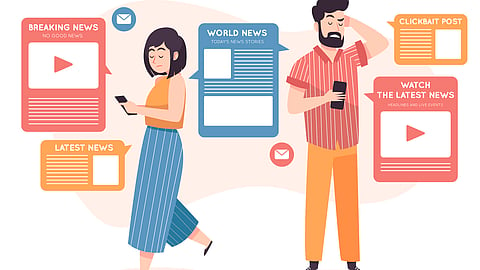Reader engagement tactics for acquisition and retention
Written by: Shantha
Did you know, 45% of readers who load an article will leave within the first 15 seconds. Over 60% that leave your site will not return.
A study from INMA in 2019 found that 59% of publishers spend less on engagement than they do on acquisition, but today, it’s the opposite. Why, you ask? The numbers above speak for themselves.
The ever-accelerating news cycle leaves publishers with little time to make decisions that directly impact real-time reader engagement. It’s no secret that reader engagement is probably the single most important driver for both acquisition and retention.
There are a variety of factors that have led to these worrying numbers but let’s take a step back. The only bright spot for 2020 among publishers and news groups across the world was the incredible surge in digital subscriptions—traffic to some subscription pages was up 500%. Cut to the present; as the news cycle starts to slow and people start to venture back out, publishers are focused on keeping as many acquired readers as possible.
It’s safe to take comfort in the age-old saying: change is the only constant. Given that, your reader engagement tactics will need to fulfil both objectives at all times. Here’s a handy list of moves to try out as you build your reader engagement strategy.
3 reader engagement tactics to drive acquisition and retention
Reader engagement is much like habit formation when you think about it. Every strategy you deploy is designed to keep the reader coming back for more. And unsurprisingly, it’s much more expensive—25% more—to acquire a new one than to hold on to an existing reader. If you’re not retaining people, there’s no net growth.
Track what matters: It’s really no longer just about pageviews or monthly visits, publishers need to track the actual engagement of your readers. For example, the Financial Times measures the mix of recency + frequency + volume to establish an engagement score. The Wall Street Journal’s Editor-in-chieif once spent six months travelling the world to train every single reporter and editor in the organisation on their engagement metrics and strategies. You need to know what your readers want, like and enjoy—your tracking needs to be linked to lifetime value and retention.
Leverage email: Newsletters are already an important part of most digital strategies today—used by 90% of a surveyed audience by American Press Institute—but there’s still scope for improvement and experimentation. If you know who you’re writing for, ensure your writing is clear, passionate, knowledgeable and conversational. Start building a personal relationship with your readers. The New Yorker found that the top sign a reader will become a paid subscriber is if they are a newsletter subscriber. But it’s not just about newsletters, experiment with the right kind of messaging and emails for your audience.
Listen, listen, listen: By listening to your readers you’ll soon understand their consumption behaviour. For instance, The New York Times spent 2018 helping its readers better their lives—focusing on their readers’ constant thirst for self improvement. You may find differences within your own audience which will help you make decisions about whether it’s quality or quantity they’re after: some readers are more loyal if they receive email correspondence as compared to those who don’t. The key, as with most things in life, is to listen and understand.
Denise Warren, former President of Digital at Tribune Publishing and former EVP of Digital at The New York Times said, “The most effective retention strategy is a really good acquisition strategy. If we want to improve retention, we have to be better at acquisition. It doesn't just mean pumping up the numbers, it means looking at the customer lifetime value.” There are so many different moves you can try here—you need to figure out what works best for your audience.

